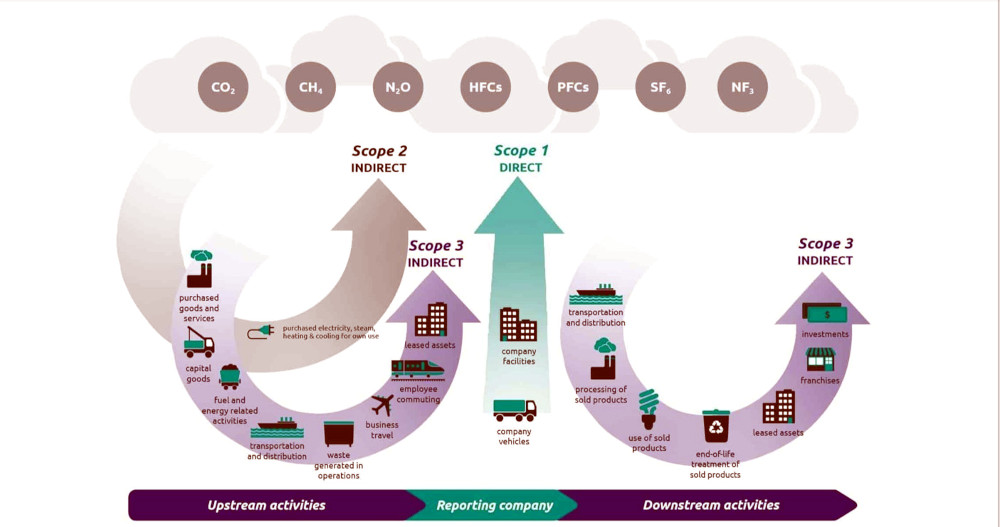The Holy Grail of Walking Our Climate Talk
Managing these external emissions is hard, as they often lie outside of a company’s direct control. How do you get a supplier to change its practices? How do we capture these emissions data points? How do we assess the data quality?
Upon hearing the term “Scope 3,” one might think of a doctor’s office, a bottle of mouthwash or maybe a sci-fi movie. But Scope 3 refers to and accounts for the greenhouse gas emissions that are not generated from onsite operations (Scope 1), or offsite emissions needed to create electricity (Scope 2).
Scope 3 emissions can come from the following sources:
- Purchased goods and services
- Capital goods
- Waste generated in operations
- Business travel
- Employee commuting
- Upstream transport and distribution
- Downstream transport and distribution
- Use of sold products
- Investments

In many sectors of the business community, Scope 3 emissions represent most of a company’s overall emissions.
For example, the majority of emissions coming from the Food and Agriculture sector are embedded up the value chain in the dozens to thousands of farms producing food: Scope 3 emissions.
In the Automotive sector, most emissions are embedded down the value chain within the millions of purchased and leased vehicles that are being driven around and between cities and towns: Again, Scope 3 emissions.
Managing these emissions is hard, as they often lie outside of a company’s direct control. How do you get a supplier to change its practices? How do you get customers to change their behavior? These are difficult management questions with many potential answers.
Emissions generated from within a company’s employee base also represent a significant chunk of a company’s total Scope 3 emissions. And with many companies’ employees working remotely now, this way of doing business is likely to continue — more dispersed, more remote, less in their control.
This shift in emissions from within the operational four walls of a company to the countless sets of four walls around employees’ homes, apartments, coworking spaces, etc will no doubt be a reporting burden that many companies will increasingly face. But this focus is necessary and important, as it addresses the most pressing risk that business faces — climate change — while helping business’ greatest asset: Employees.
How do we capture these emissions data points? How do we assess the data quality? How do we incentivize companies to tackle these issues? How do we help the companies on board to incentivize their employees to participate?
We know this is of growing interest to companies. From our research this past summer, we ascertained that many companies have voluntarily signed up for the following leading sustainability/ESG programs, all of which address Scope 3 emissions in some form or fashion:
- CDP: 9,617
- 1% for the Planet: 5,840
- B Corp certification: 4,075
- Science Based Targets Initiative: 1,696
In addition, our friends over at Pivot Goals, a project of Winston Eco-Strategies, recently reported that over 200 companies have made 370 net-positive goals in the past year.
And there is little overlap of companies — meaning that together, this list represents many unique organizations. That is great news for the world and emissions reductions.
Published by Sustainable Brands, https://sustainablebrands.com/read/supply-chain/scope-3-the-holy-grail-of-walking-our-climate-talk


